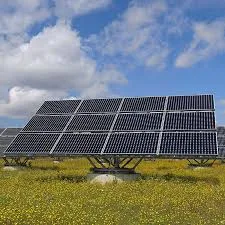size of 400w solar panel
Understanding the Size of a 400W Solar Panel
In recent years, solar energy has become an increasingly popular option for homeowners and businesses looking to reduce energy costs and minimize their carbon footprint. One of the critical components of a solar energy system is the solar panel itself. Understanding the dimensions and specifications of a 400-watt (400W) solar panel is essential for planning an effective solar installation.
What is a 400W Solar Panel?
A 400W solar panel is a photovoltaic (PV) panel capable of generating 400 watts of electrical power under standard test conditions (STC). These panels are typically made up of numerous solar cells made from silicon, which convert sunlight directly into electricity. The efficiency of a panel, which affects how much power it can produce relative to its size, is determined by the technology used in its manufacturing, such as monocrystalline, polycrystalline, or thin-film.
Dimensions of a 400W Solar Panel
Most modern 400W solar panels have approximate dimensions of about 1.7 meters by 1 meter (67 inches by 39 inches). However, these dimensions can vary slightly depending on the manufacturer and the specific technology used. Generally, a 400W solar panel will weigh between 40 to 50 pounds (18 to 23 kg), making them substantial but manageable for installation on rooftops or ground-mounted systems.
Space Requirements
When planning to install a solar energy system, it is crucial to take into account the amount of space required for the solar panels. Given the dimensions mentioned above, installing a single 400W panel requires an area of roughly 1.7 square meters (approximately 18 square feet). However, for a typical residential solar installation, multiple panels are required to meet the energy demands of the home.
size of 400w solar panel

For instance, a household with a monthly electricity consumption of 900 kWh would need approximately 7-10 of these 400W panels to generate enough power throughout the year, depending on factors such as location, orientation, and shading. This translates to an area of around 12 to 18 square meters (about 130 to 195 square feet) reserved for the panels.
Layout Considerations
When integrating a 400W solar panel system, layout considerations are critical to maximizing efficiency. Solar panels should be installed in a location that receives ample sunlight, ideally facing south (in the Northern Hemisphere) to capture the most sunlight throughout the day. It is also important to ensure that nearby trees, buildings, or other obstructions do not cast shadows on the panels, as even partial shading can significantly reduce their output.
Installation and Mounting Options
The installation of a 400W solar panel can be done in various ways, including roof-mounted systems, ground-mounted systems, and solar carports. Roof installations are common among residential users, as they utilize previously unused space and do not require additional land. Ground-mounted systems, on the other hand, offer flexibility in terms of angle and orientation but may require more space. Both types of installations need to factor in the dimensions of the panels and the overall footprint of the system.
Benefits and Considerations
Choosing to install 400W solar panels comes with several benefits, including reduced electricity bills, potential tax credits, and an overall positive impact on the environment. However, prospective solar owners should also consider factors such as local regulations, solar incentives, installation costs, and long-term maintenance.
In conclusion, understanding the size and implications of installing a 400W solar panel is crucial for anyone considering solar energy solutions. With careful planning and consideration of space requirements, layout, and installation options, homeowners and businesses can effectively harness solar energy and enjoy the benefits it brings. As solar technology continues to evolve, 400W panels may become even more efficient and affordable, making solar energy an attractive choice for many.
-
String Solar Inverter: The High-Efficiency Solution for Smart Solar EnergyNewsJul.14,2025
-
Revolutionizing Rooftop Energy with the Power of the Micro Solar InverterNewsJul.14,2025
-
Power Independence with Smart Off Grid Solar Inverter SolutionsNewsJul.14,2025
-
On Grid Solar Inverter: Powering the Future with Smart Grid IntegrationNewsJul.14,2025
-
Monocrystalline Solar Panels: High-Efficiency Power for the Future of Clean EnergyNewsJul.14,2025
-
Bifacial Solar Panel: A Smarter Investment for Next-Generation Energy SystemsNewsJul.14,2025







